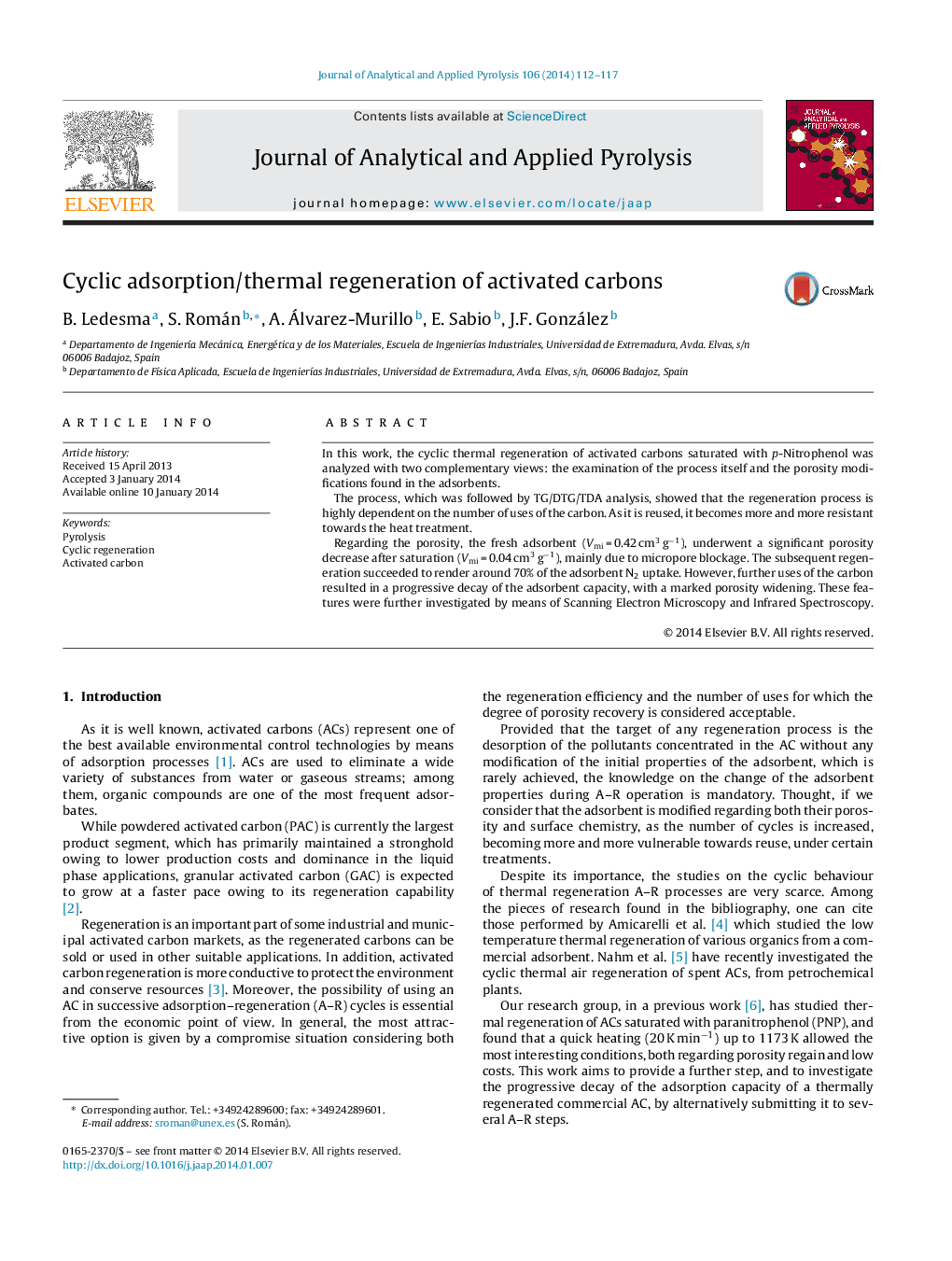| Article ID | Journal | Published Year | Pages | File Type |
|---|---|---|---|---|
| 1196864 | Journal of Analytical and Applied Pyrolysis | 2014 | 6 Pages |
•Cyclic thermal regeneration of paranitrophenol spent adsorbents was studied.•The adsorbent showed increasing resistance towards regeneration.•Porosity became more and more difficult to recover.•A general pore widening was found as the number of cycles increased.•The permanence of cracking products was consistent with the surface chemistry changes.
In this work, the cyclic thermal regeneration of activated carbons saturated with p-Nitrophenol was analyzed with two complementary views: the examination of the process itself and the porosity modifications found in the adsorbents.The process, which was followed by TG/DTG/TDA analysis, showed that the regeneration process is highly dependent on the number of uses of the carbon. As it is reused, it becomes more and more resistant towards the heat treatment.Regarding the porosity, the fresh adsorbent (Vmi = 0.42 cm3 g−1), underwent a significant porosity decrease after saturation (Vmi = 0.04 cm3 g−1), mainly due to micropore blockage. The subsequent regeneration succeeded to render around 70% of the adsorbent N2 uptake. However, further uses of the carbon resulted in a progressive decay of the adsorbent capacity, with a marked porosity widening. These features were further investigated by means of Scanning Electron Microscopy and Infrared Spectroscopy.
